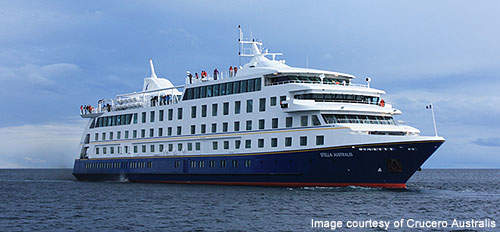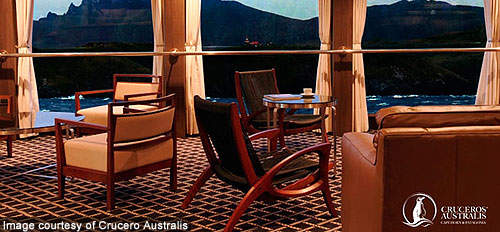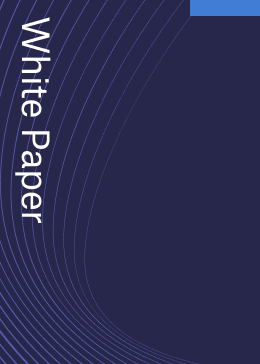Stella Australis is a cruise ship launched in December 2010, which operates between the Argentine city of Ushuaia and the Chilean city of Punta Arenas. The vessel is owned and operated by Crucero Australis.
It was added to her sister ships Mare Australis and Via Australis, which were built in 2002 and 2005 respectively. All the three ships were designed for Patagonia cruising.
Construction
The new ship was constructed at ASENAV shipyard in Chile and was delivered in September 2010. The passenger vessel was built on par with the standards of SOLAS 2001 and MARPOL 73/78.
Approximately 2,000t of steel was used for the building of the cruise ship.
Stella Australis design
The cruise ship was designed to withstand conditions in Cape Horn area. It has a length of 89m and beam of 14.6m, and can accommodate 210 passengers. Its gross tonnage is 4,500t.
Facilities
The vessel features three lounges, five decks and 100 cabins. The three lounges are named Darwin, Yamaha and Sky. The Yamaha lounge is used for lectures and accommodates a library and video equipment. It also has a games room but has no fitness facilities.
All three lounges are equipped with modern audiovisual equipment and feature a single dining room, exercise room and open deck area to view scenery. The dining room provides a panoramic view and serves regional as well as international cuisine.
The decks are named Patagonia, Magallanes, Tierra del Fuego, Cabo de Hornos and Darwin respectively.
The Patagonia deck has a galley and dining room. The Magallanes deck accommodates a reception area and gift shop. The cabins in this deck have picture windows of 3ft tall and wide. The Tierra del Fuego deck features the Yamaha lounge. Cabins on this deck have picture windows that are 5ft tall and wide. The fourth deck, Cabo de Hornos, has the Sky lounge. Cabins on this deck have picture windows of 6ft tall and 5ft wide. The fifth deck, Darwin, features the Darwin lounge, a bar and a gym. The space occupied by the five decks is roughly equivalent to a five-story building.
Onboard facilities include four Zodiacs or inflatables for the purpose of shore excursions and wildlife watching. Waterproof jackets are provided as a safety measure. A loud speaker is present for the purpose of internal communication in the cruiser. No facilities are provided for disabled passengers.
Accommodation
Out of 100 cabins 96 are approximately 16.5m² in area and the remaining four are superior cabins of 20.5m². The cabins are categorised into four types B, A, AA and AAA. There are three B cabins, 34 A cabins, 38 AA cabins and 25 AAA cabins.
The cabins feature low beds, a safety box, picture windows, a private bathroom, an independently controlled heater, adapter and a satellite phone. Air conditioning and heating facilities are available in all the cabins. There are fire stations, emergency generators, smoke detectors in all cabins, corridors and lounge areas.
The ship can accommodate 62 crew members.
Navigation and communication
Stella Australis is equipped with the latest navigation and safety technology. The navigation system features an echo sounder, radar, GPS and modern communication systems.
The machine room is equipped with fire extinguishers. A sprinkler fire suppression system is installed in the ship.
Propulsion
The cruise ship is powered by two Cummins diesel engines of 1,400hp each. The engines give the vehicle a maximum speed of 13kts, whereas the service speed is 12kts.
Itinerary
The ship went on a maiden voyage from Punta Arenas in Chile to Ushuaia in Argentina on 18 December 2010. It departed from Punta Arenas and travelled through Ainsworth Bay, Pia Glacier, Cape Horn, Ushuaia, Gunther Plüschow Glacier and Magdalena Island.
An expedition team onboard delivers lectures on plants, animals, history, geography, glaciology and ethnography of the region. Land excursions, lasting around two hours each, will be organised daily throughout the cruise.







